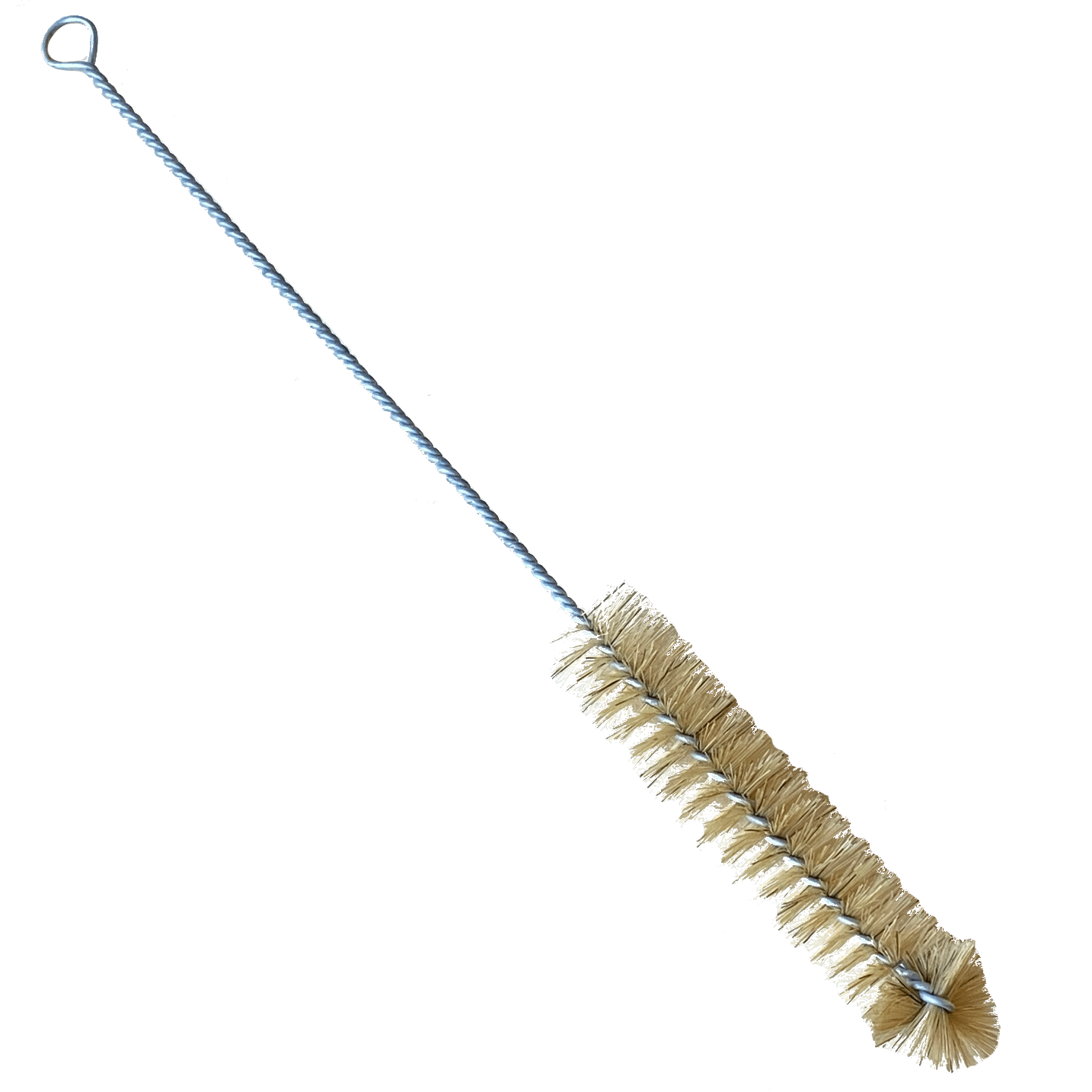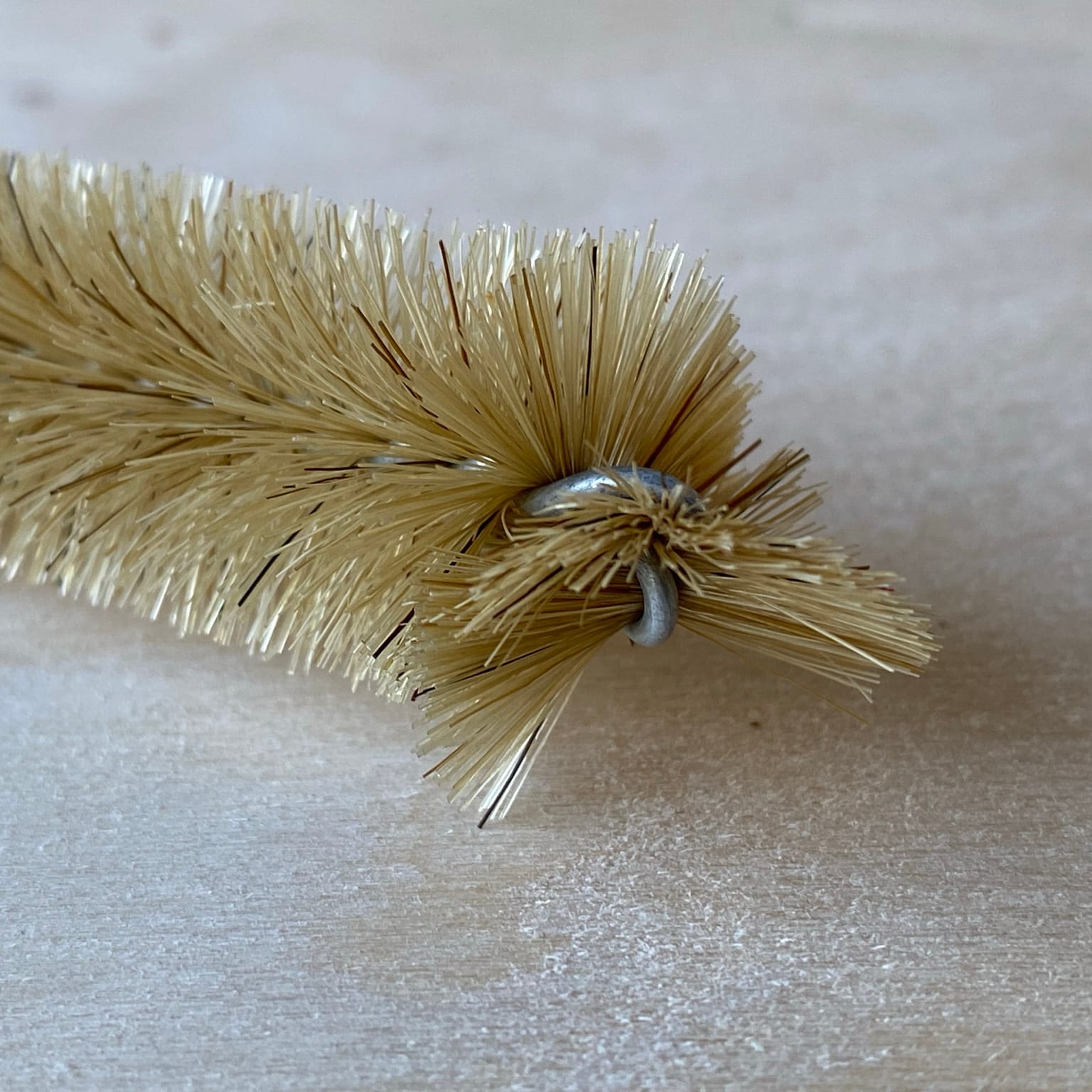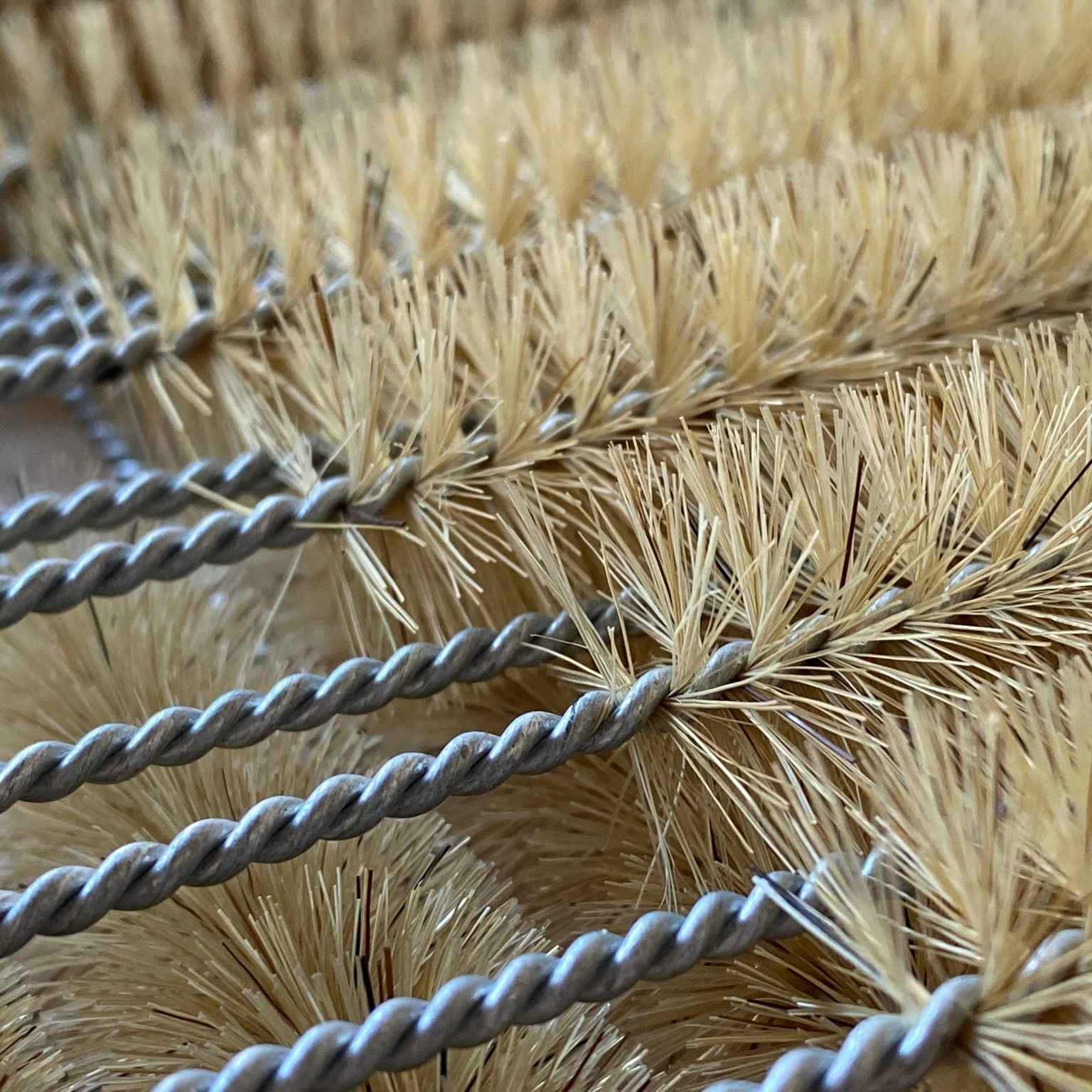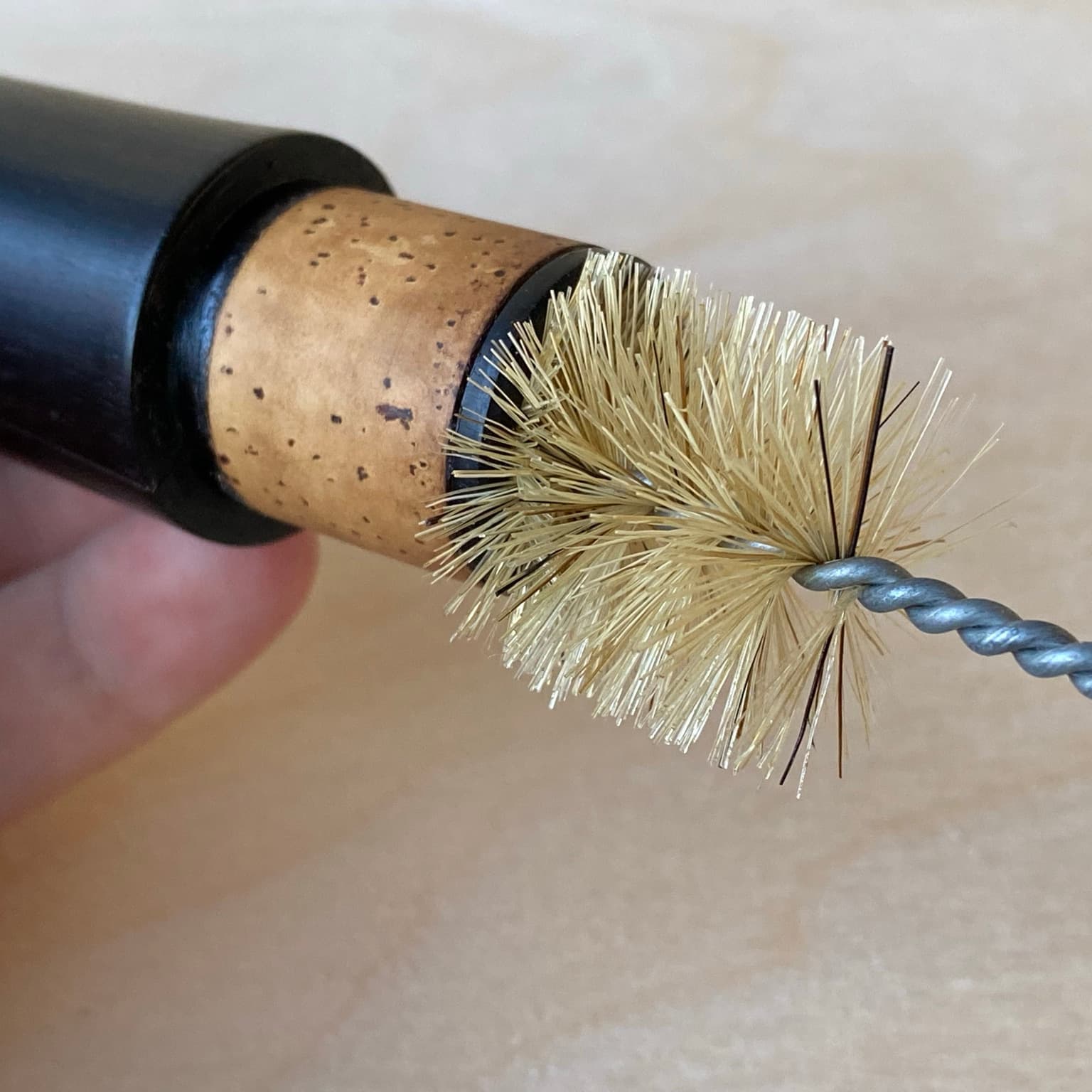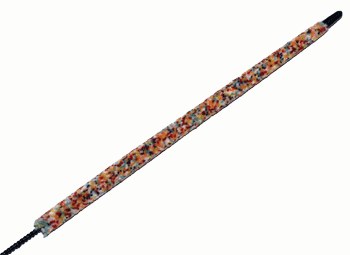Description
A woodwind instrument goes through a lot in its life. To keep it long lasting and beautiful to look at, you should always treat it with care. This also includes regular care with a natural oil. This protects the flute from moisture penetration on the one hand and from drying out on the other.
The perfect oil brush
Until the wooden flute is played in, it is best to oil it once a week. After that, treatment with oil and brush every three to four months is sufficient.
The 25 mm diameter oil brush from Folk.World consists only of wire and bristles and is therefore plastic-free. This simple but effective design ensures that the maintenance oil can be spread cleanly over the wood in a fine layer. When using other brushes with textile fibers, on the other hand, lint or fibers can easily remain inside the instrument. There is a risk that these will combine with the oil and form deposits that are difficult to dissolve. The Folk.World oil brush with natural bristles, on the other hand, does not “suck” the care product. It only coats the bristle with a fine film, which is immediately released back into the wood. This allows you to use the care oil sparingly and effectively.
Do I have to oil every woodwind instrument?
The Folk.World oil brush is suitable for the care of an Irish Flute and for oiling wooden flutes for bagpipes. These include flutes made of hardwoods such as boxwood, grenadilla, rosewood, ebony, plum or olive. Woodwind instruments made of pear or maple, on the other hand, do not necessarily need to be oiled, as they are usually already lightly paraffinized. However, it does not hurt to give them a little “oil cure” from time to time.
For oiling your hardwood instrument, it is best to use almond oil, because it is high quality and harmless from a sustainable point of view. Some also recommend linseed oil for this purpose, but you should rather use it for “softer” wood. With hardwood, linseed oil tends to form resinous residues. Almond oil can be applied very thinly to hardwoods, is quickly absorbed and has a neutral odor.
Wooden flutes – properly oiled
Allow the wooden flute to dry thoroughly before care treatment so that no residual moisture is trapped. Make sure it is free of dirt and other debris.
Disassemble the flute (if necessary) into its individual parts. The mouthpiece is always oiled separately! If you have an instrument with keys, slip some crumpled plastic wrap under the key pads before oiling.
Always hold the individual parts of the flute upright for oiling so that the maintenance oil cannot run into the finger holes or the windway.
Now put a few drops of almond oil on the insides for oiling. Push the oil brush in and gently rotate it around its own axis several times.
For “partially lined” headpieces, do not forget the inner bore! The head and labium can also use careful oiling, preferably with a cloth or brush that is still slightly wet.
You do not need to oil the cork surfaces that lie on top of each other when you put them together. By the way, there is special cork grease for the corks, because they should not get too dry either.
Then check in the light whether the oil is well distributed and repeat the process if necessary.
Unvarnished wooden flutes are also coated with a fine layer of oil on the outside. It is best to use a cloth that is already slightly oily. Painted instruments can be – discreetly! – oil from the outside. They get a beautiful shine in the process.
Total length: 30cm
Trimming length: 12 cm

